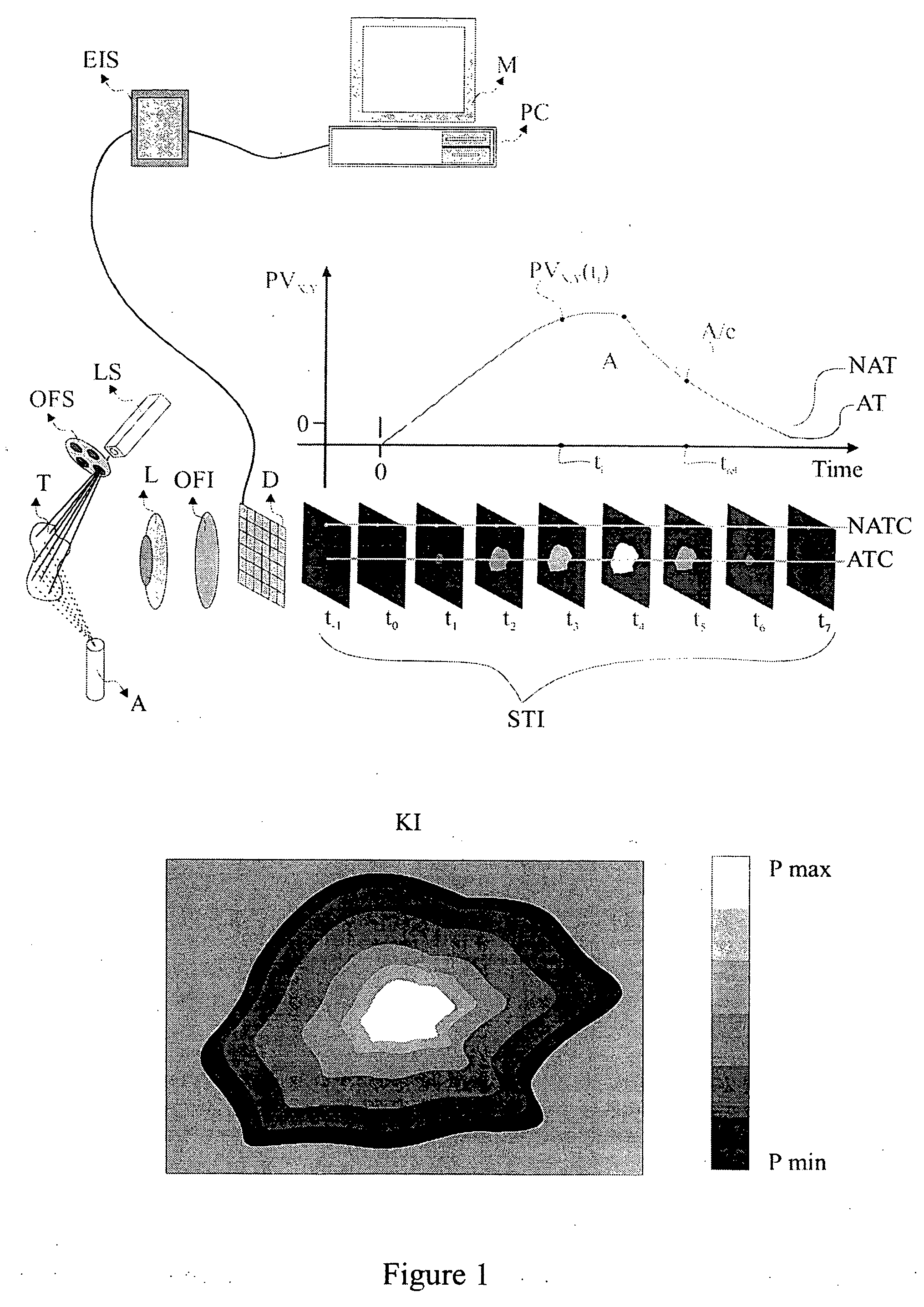Method and system for characterization and mapping of tissue lesions
a tissue lesions and mapping technology, applied in the field of tissue lesions characterization and mapping, can solve the problems of invasive cancer and metastases, the possibility of successful therapy is dramatically diminished, and the conventional clinical process of optical examination has very limited capabilities in detecting cancerous and pre-cancerous tissue lesions
- Summary
- Abstract
- Description
- Claims
- Application Information
AI Technical Summary
Benefits of technology
Problems solved by technology
Method used
Image
Examples
Embodiment Construction
[0057] The present invention is directed to a method and system for the in-vivo, non-invasive detection and mapping of the biochemical and or functional alterations of tissue, e.g., tissue within a subject. Upon selection of the appropriate agent which enhances the optical contrast between normal and pathologic tissue (depending on the tissue's pathology), this agent is administered, e.g., topically to the tissue. In FIG. 1, the tissue (T), is sprayed using an atomizer (A), which contains the agent, e.g., acetic acid. At the same time, the tissue is illuminated with a source that emits light at a specific spectral band, depending on the optical characteristics of both the agent and the tissue. Illumination and selection of the spectral characteristics of the incident to the tissue light can be performed with the aid of a light source (LS) and a mechanism for selecting optical filters (OFS). Of course there are several other methods for illuminating the tissue and for selecting the s...
PUM
| Property | Measurement | Unit |
|---|---|---|
| time | aaaaa | aaaaa |
| volume | aaaaa | aaaaa |
| depth | aaaaa | aaaaa |
Abstract
Description
Claims
Application Information
 Login to View More
Login to View More - R&D
- Intellectual Property
- Life Sciences
- Materials
- Tech Scout
- Unparalleled Data Quality
- Higher Quality Content
- 60% Fewer Hallucinations
Browse by: Latest US Patents, China's latest patents, Technical Efficacy Thesaurus, Application Domain, Technology Topic, Popular Technical Reports.
© 2025 PatSnap. All rights reserved.Legal|Privacy policy|Modern Slavery Act Transparency Statement|Sitemap|About US| Contact US: help@patsnap.com



